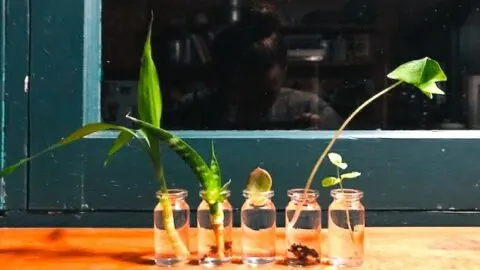Houseplants are not very expensive in themselves. Even for little money, you can turn your living space into an urban jungle.
But instead of constantly buying new plants, many plant parents try their luck with propagating their houseplants by themselves because they actually enjoy the process of doing so and love to see new plant babies come to life!
However, the difficulty of plant propagation varies heavily, and while some plants are incredibly easy to multiply, others require a seasoned green thumb to succeed.
The good news is this article is geared towards beginners.
With that said, let us now have a look at some of the easiest houseplants to propagate!
We get commissions for purchases made through links in this post.
Table of Contents
Easiest Houseplants to Propagate
That said, houseplants can be propagated in numerous ways. While some of these propagation techniques demand a certain amount of experience and knowledge, others are a piece of cake even for beginners and black thumbs.

Easiest Houseplants to Propagate
In this article, we will focus on houseplants that are very easy to multiply, namely the easiest plants to propagate.
1. Pothos (Epipremnum aureum)
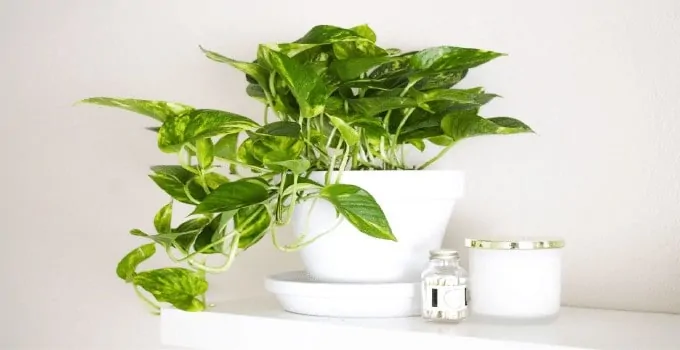
Pothos plants are extremely hardy plants. There’s really not much you can do wrong with Pothos. And that is also true when it comes to propagating this beautiful leafy friend.
Pothos roots incredibly well in water. So all you need to do to create some baby plants is to cut the vine just at a point below where a new leaf is coming out of the vine.
Then, watch out for the nodes on your new cutting. The nodes are essentially where the leaf is attached to the vine.
Now, all that is left for you to do is to equip yourself with some sharp scissors and to make a cut on either side of the node (with a distance of about 1 centimeter from the node).
So if your initial cutting left you with let’s say a vine that had 6 leaves, you would cut that again with clean cuts left and right of every leaf node and you would end up with a total of 6 cuttings.
Now, simply put these cuttings in water (you can use a glass jar or even a tall glass for that purpose). And then wait. After about 2 to 4 weeks new roots should develop. When the roots are about 1 inch (5 cm long), you can put the cuttings in a new pot with a fresh soil mixture.
If you would like to get some more in-depth information on how to propagate Pothos, simply head over to our Pothos Plant Care article.
| Propagation Method | Details | Estimated Success Rate |
|---|---|---|
| Water propagation | Cut the vine just below a new leaf node and place in water. | High |
| Soil propagation | Place the cut vine with the node in the soil. | Medium |
| Layering | Bend the vine back into the same or a new pot, ensuring a node is buried. | Low |
2. Sansevieria

Sanseveria are commonly known as Snake plants. While there are a lot of different Snake plants out there, they can all be propagated through division. Propagating Sansevieria through division is probably the easiest and fastest way, but certainly not the only way.
You can also go about propagating your Sansevieria through leaf cuttings. And that is easy too. All you need to do is to take a Sansevieria leaf and put that in water and then wait. It is really as simple as that.
Just make sure to change the water once in a while and keep it in a warm environment. Once the leaf develops roots, you can transfer the leaf to a new pot. Well-draining soil works best.
| Propagation Method | Details | Estimated Success Rate |
|---|---|---|
| Division | Divide the plant and repot. | High |
| Leaf cuttings | Take a leaf, put it in water, wait for roots to develop, then repot. | Medium |
3. Spider plant (Chlorophytum Cosomum)

More often than not, plants that are considered low-maintenance, such as the spider plant, are also very easy to propagate. This definitely holds true with Chlorophytum comosum.
There are 3 ways to propagate a Spider plant: By root division, from seeds, or by simply rooting plant babies (plantlets).
All of these 3 propagation methods yield good results with Pothos. The easiest and fastest way is by rooting planlets.
To get a good idea of how you would actually propagate your spider plant, please consult our Spider Plant 101.
| Propagation Method | Details | Estimated Success Rate |
|---|---|---|
| Rooting plantlets | Root plant babies (plantlets) for easiest and fastest propagation. | High |
| Root division | Propagate by dividing the roots. | Medium |
| Seeds | Propagate from seeds. | Low |
4. ZZ Plant (Zamioculcas Zamiifolia)
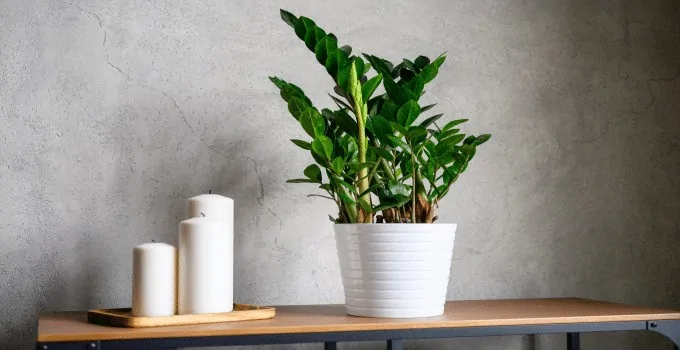
Another hard-to-kill plant that is also very easy to propagate is the Zamioculcas Zamiifolia, aka the ZZ plant.
ZZ plants have huge tubers and all you need to do to propagate a ZZ plant is to divide it in half and then repot it.
If you already have a big plant, you can obviously also divide the plant in more than just two pieces.
Another way of propagating a ZZ plant is by stem cuttings. You can put ZZ plant stem cuttings in water and they will eventually create roots. However, this is certainly not the best way to propagate a ZZ plant, as this takes a long time.
| Propagation Method | Details | Estimated Success Rate |
|---|---|---|
| Division | Divide the plant and repot. | High |
| Stem cuttings | Put ZZ plant stem cuttings in water, wait for roots to develop, then repot. | Low |
5. Chinese Money plant (Pilea Peperiomioides)
 When we talk about plants that are easy to propagate, then Pilea Peperiomoides certainly deserves a mention. In fact, it doesn’t get much easier than propagating this beautiful houseplant because guess what, this awesome plant actually does the job for you and simply propagates on its own.
When we talk about plants that are easy to propagate, then Pilea Peperiomoides certainly deserves a mention. In fact, it doesn’t get much easier than propagating this beautiful houseplant because guess what, this awesome plant actually does the job for you and simply propagates on its own.
So all that is left for you to do is to wait until the plant is popping up babies on its own. When those babies are about 2 to 3 inches tall, just simply remove them and put them in a new pot with new soil.
As always, make sure that those new babies have enough root systems to support them. If that is not the case, propagation might no be successful!
| Propagation Method | Details | Estimated Success Rate |
|---|---|---|
| Self-propagation | Wait until the plant pops up babies on its own. When babies are 2-3 inches tall, repot. | High |
6. String of Pearls (Senecia rowleyanus)

The string of pearls houseplant, a perennial vine belonging to the group of succulents, is yet another houseplant that is easy to propagate. Almost too easy, as this plant is actually “self-propagating.”
However, not self-propagating in a way that the Chinese Money plant does (by developing new plant babies around the mother plant in the very same pot) but rather in an even more spectacular way.
So, how?!?
Well, it really is at easy as it gets. Let’s say you have your String of Pearls in a hanging basket, then all you really need to do is to fill a new pot with your favorite potting soil and put that soil below your string of pearls and layer it on top of the soil.
By simply putting the hanging parts of your string on pearls on that bed of soil, believe it or not, new roots will develop. Until that happens, don’t forget to water the compost, just as you would when using other propagation methods.
After about 4 weeks, new roots should have developed and it will be time to detach (cut) the mother plant from your new plant. Done.
| Propagation Method | Details | Estimated Success Rate |
|---|---|---|
| Layering | Lay a section of the vine on the surface of the soil | High |
7. String of Bananas (Senecio radicans)
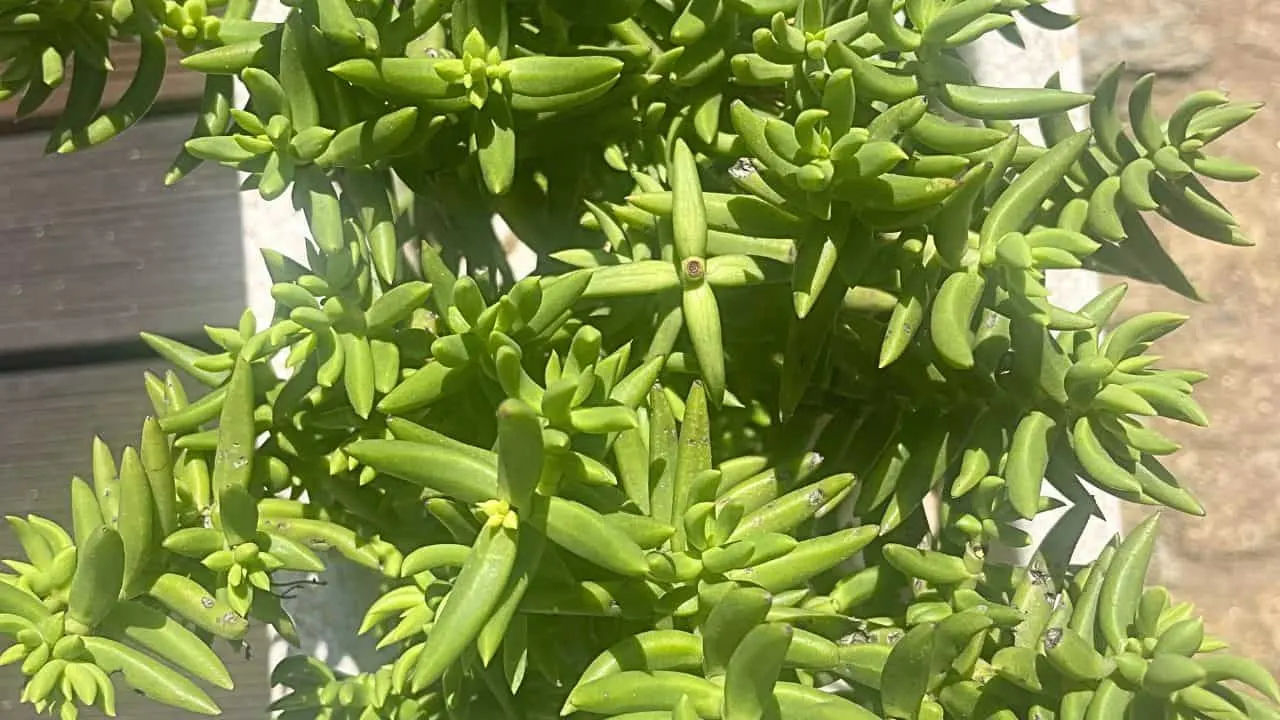
So, here again, to multiply your String of Bananas, all you need to do is to layer the end of your String of Bananas on a new pot with fresh potting soil and then wait for about 4 weeks for roots to develop. The method is very much the same as for the String of pearls plant.
Who would have thought propagating houseplants can be that easy?
| Propagation Method | Details | Estimated Success Rate |
|---|---|---|
| Layering | Lay the end of the vine on new potting soil | High |
8. String of Hearts (Ceropegia woodii)
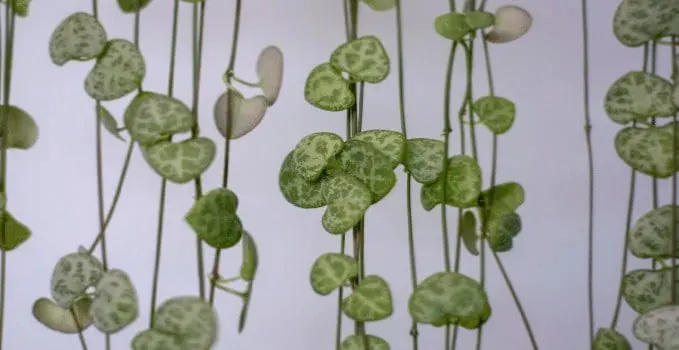
String of Hearts, which also goes by the name of Chain of hearts can be either water-propagated or propagated directly in soil. Both of these propagation techniques yield great results but we do find that propagating Chain of Hearts in water is a bit easier overall.
To propagate the Rosary vine ― yet another name for the String of Hearts houseplant ― in water, you can simply follow the instructions as outlined in this video.
Also, if you would like to try out something a little bit more unconventional, you could also try to propagate your String of Hearts with the “Non-Cut-Method”, commonly known as “Layering” that we introduced for the String of Bananas and the String of Pearls houseplants.
This fun method to make new plants also works for our Ceropegia woodii!
| Propagation Method | Details | Estimated Success Rate |
|---|---|---|
| Water propagation | Put a piece of vine in water until roots develop | High |
| Soil propagation | Put a piece of vine directly into the soil | Medium |
| Layering | Layer the vine on top of the soil | Low |
9. Moses in the Cradle (Tradescantia spathacea)

There are two proven ways how Moses in the Cradle (Tradescantia Spathacea) can easily be propagated: through plant division or stem cuttings.
If you are looking for the easiest way to propagate this beautiful plant, you should go for plant division.
All it takes for you to produce new plant babies is to actually remove some offshoots that grow around the plant and to pot them separately. When potting, make sure that enough roots are attached.
| Propagation Method | Details | Estimated Success Rate |
|---|---|---|
| Division | Remove offshoots from around the plant and repot them | High |
| Stem cuttings | Cut the stem and plant directly into soil | Medium |
10. Arrowhead plant (Syngonium podophyllum)
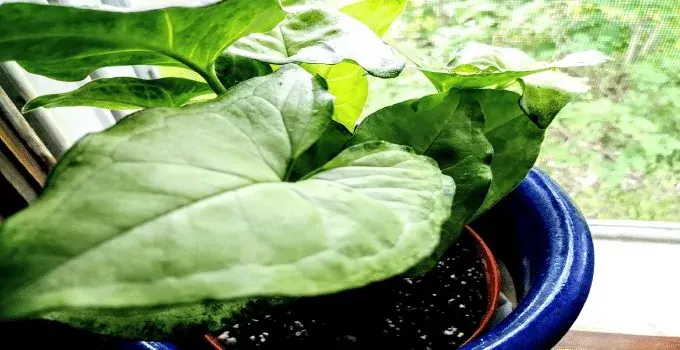
The so-called Arrowhead plant roots extremely easily in water. So, the easiest way to propagate this plant is to simply take stem cuttings and put them in water.
You won’t even have to dip these cuttings in rooting hormone before putting them in water, as this plant has a very strong will to produce roots on its own even without additional help.
Syngonium can also be propagated by division, which is easy peasy as well.
If you would just like to get some basic care tips for Syngonium podophyllum, feel free to have a look at our Arrowhead Plant Care article.
| Propagation Method | Details | Estimated Success Rate |
|---|---|---|
| Water propagation | Take stem cuttings and put them in water | High |
| Division | Separate the plant and repot each part | Medium |
11. Strawberry Begonia (Saxifraga stolonifera)

Much as with the Spider plant (Chlorophytum comosum), Strawberry Begonia can be easily propagated through separation.
To make more strawberry begonia plants, you can, therefore, just separate the offshoots from the mother plant and give them a new home (put them in a new pot!).
However, these offsets that form at the end of stolons don’t necessarily need to be detached from the parent plant in order to be propagated. They can also be left with the parent plant.
If that is what you would like to do, you can simply pin them to the soil with a paper clip; the offsets will then root and new plants will come to life like that as well!
| Propagation Method | Details | Estimated Success Rate |
|---|---|---|
| Division | The plant naturally forms stolons (runners). You can simply detach these new plantlets and plant them in a separate pot | High |
| Leaf cuttings | Cut a leaf along with a small part of the stem and put it in water or soil | Medium |
12. The Wandering Jew (Tradescantia pallida)
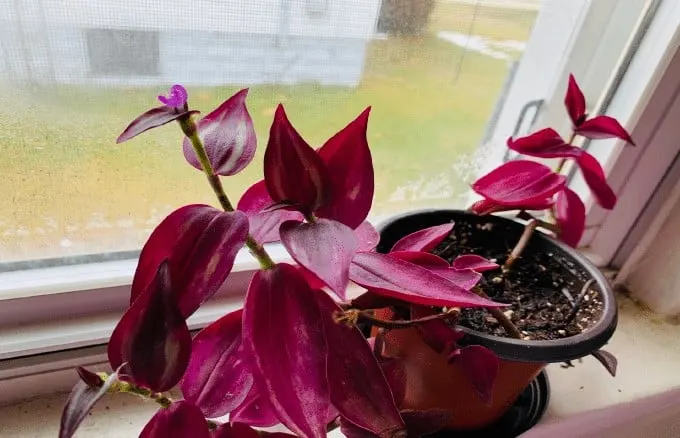
The Wandering Jew, yet another very popular houseplant, is another candidate for the title of “Easiest houseplant to propagate.”
The easiest way to propagate Tradescantia pallida is through stem cuttings. Take some cuttings, put them in water, wait for roots to start growing and then plant your new plant babies. DONE.
Tradescantia plants root extremely quickly that way. It often just takes them a couple of days to spring out roots and just about one week for the roots to be large enough to be put in soil.
| Propagation Method | Details | Estimated Success Rate |
|---|---|---|
| Stem Cuttings | This plant can be propagated by taking stem cuttings about 4-6 inches long, removing the lower leaves and placing the cuttings either in water until they develop roots, or directly in soil. | High |
13. Peperomia Hope
Sieh dir diesen Beitrag auf Instagram an
Every part of a Peperomia plant can be used for propagation. The Peperomia Hope is no exception here and is very easy to propagate. You can propagate Peperomia Hope using stem cuttings, leaves, or even half a leaf.
The stems and leaf cuttings can be stuck directly into the soil or into the water for propagation.
After 2-3 weeks roots will start to form and voila, you have a new Peperomia Hope.
| Propagation Method | Details | Estimated Success Rate |
|---|---|---|
| Leaf Cuttings | This plant can be propagated by taking leaf cuttings. You can either cut off a whole leaf (with petiole) and lay it on top of soil or cut the leaf in half and press it into the soil. | High |
| Stem Cuttings | Stem cuttings can also be used. Cut a stem with leaves attached, let it dry for a day to prevent rot, and then place it in water or soil. | Moderate |
Read more about Peperomia Hope care.
14. Polka Dot Begonia (Begonia maculata)

Begonia maculata is easy to propagate through stem cuttings
Begonia maculata is a beautiful plant with white dots on the upper side of the leaves. The underside of the leaves is completely red.
It is great to know that this Begonia is very easy to propagate. The only thing you have to do is to snip off a piece of the stem including a node and a leaf for faster propagation.
Put the cutting into a jar of water and wait until roots start to form. After 2-4 weeks you can transfer the rooted Begonia maculata cutting into a potting mix of sandy clay and loamy soil.
| Propagation Method | Details | Estimated Success Rate |
|---|---|---|
| Stem Cuttings | Cut a stem with a few leaves, ideally with a node, and let it sit in water until roots form. After roots are established, it can be transferred to soil. | High |
| Leaf Cuttings | This plant can also be propagated by cutting a healthy leaf along with its stalk. Insert the stalk into a moist potting mix and wait for roots to develop. | Moderate |
Read everything about Begonia maculata care in our extensive article about this houseplant.
15. Hardy Elephant Ear (Alocasia wentii)
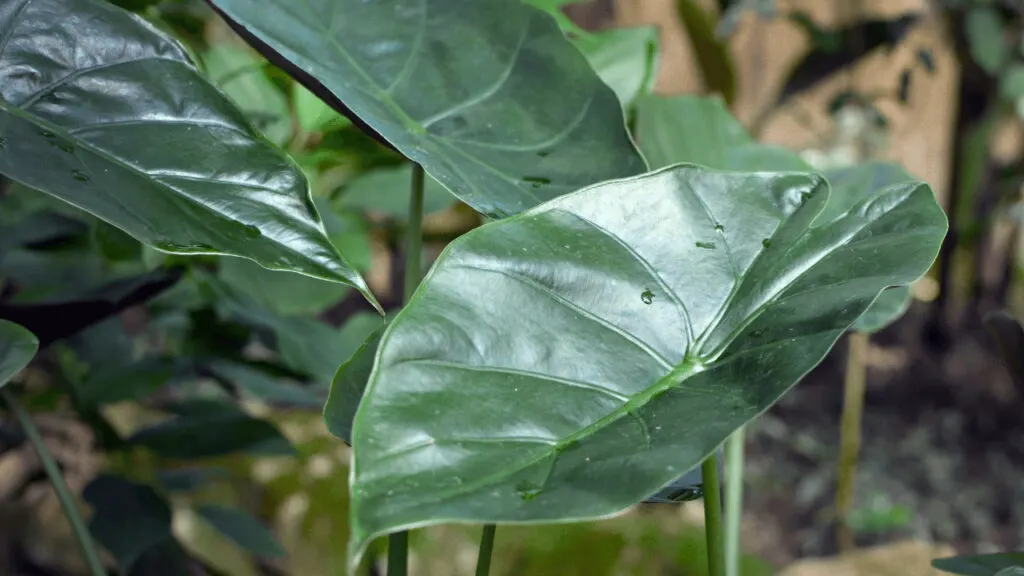
Alocasia wentii propagation is simple due to it being a tuberous plant
Alocasia plants are generally very easy to propagate as they are basically propagating themselsves. Alocasia such as the Alocasia wentii are tuberous plants and are growing tubers underground. From these tubers, new plants emerge and grow.
In order to propagate Alocasia wentii just remove the mother plant from the pot and remove the soil around the plant where pups are sprouting around the mother plant.
These pups are attached to the rhizome and most likely are already growing roots.
Therefore the only thing that needs to be done to propagate Alocasia wentii is to remove a section of the offsets with roots and leaves and put that section into its own pot with potting soil.
| Propagation Method | Details | Estimated Success Rate |
|---|---|---|
| Division | Alocasia Wentii is usually propagated by division during repotting in the spring. Mature plants will have formed several clumps which can be carefully separated and replanted in separate pots. | High |
| Offset Bulbs | Offset bulbs, or bulbils, will naturally form around the base of a mature plant. These can be carefully removed and planted in a separate container with good potting mix. | Moderate |
Find out more about Alocasia wentii care.
Conclusion About Easiest Houseplants to Propagate
There you go! 20 houseplants that are particularly easy to propagate!
As we have seen in this article, there are actually quite a lot of houseplants that are propagated pretty easily.
In some cases, the propagation process itself is easy but your patience is put to test because it might take a long time until the new plants develop roots. That’s the case with Hoya, for instance.
However, with some houseplants, propagating can be a bit more difficult, such as with Ficus Elastica (best propagated through air layering).
But let’s be honest: Who doesn’t like a challenge once in a while? And there’s nothing quite like seeing some success in propagation and discovering new roots on your new plant babies! Priceless!
Frequently Asked Questions About the Easiest Houseplants to Propagate
What is the easiest propagation method for houseplants?
Separation might be the simplest propagation method. Keep in mind that this method is not applicable for all houseplants, though. It can only be used for plants that produce offsets around the mother plant. In this case, these offsets can be easily separated from the parent plant and be potted on their own. While there are many plants that can be separated in this way, two popular houseplants that can be multiplied like this are Spider plants (Chlorophytum comosum) and Strawberry Begonias (Saxifraga stolonifera).
How often do you need to change the water when propagating houseplants in water?
In most cases, changing the water once a week is sufficient. If you do change the water more often, it’s certainly not a problem either, though.
Are Ficus Elastica easy to propagate?
It is not exactly easy to propagate Ficus Elastica. However, the main problem is not that the process itself is very difficult but rather that the propagation method itself is not that well-known (Air Layering). That said, propagating Ficus Elastica is still not that difficult. Watch a couple of videos on Air Layering on Youtube and you are good to go!
How long does it take to propagate houseplants?
This depends heavily on the actual houseplant that you are propagating and also on the propagation method you choose. When propagating from seeds, it typically takes about 2 to 4 weeks for them to sprout. If you are rooting cuttings in water, it can take anything from 2 weeks up to 4+ weeks until rooting occurs. When using the propagation technique “Air Layering”, which can be used for woody plants, such as Fiddle-leaf figs and Ficus Elastica, it can take anywhere from 3 to 7 weeks for roots to form.
Is a rooting hormone necessary when propagating through stem cuttings?
Some houseplants are very easily propagated through stem cuttings. While a rooting hormone is in many cases not a must, it can definitely speed up the rooting process and it increases the chances of successful propagation.
Which houseplants can be propagated by leaf cuttings?
African violets, Episcias, Hoyas, Rex Begonias and Snake plants can all be propagated by leaf cuttings.
Read about a very unique houseplant next: Geogenanthus Ciliatus.

Daniel has been a plant enthusiast for over 20 years. He owns hundreds of houseplants and prepares for the chili growing seasons yearly with great anticipation. His favorite plants are plant species in the Araceae family, such as Monstera, Philodendron, and Anthurium. He also loves gardening and is growing hot peppers, tomatoes, and many more vegetables.

